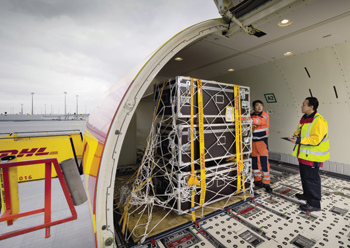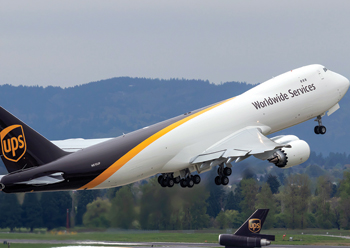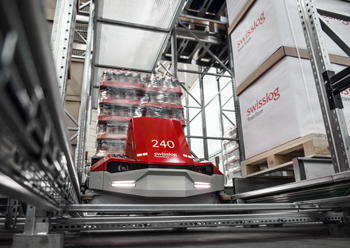
 Amadou Diallo
Amadou Diallo
The significance of the logistics sector has perhaps never been more apparent in the last two years. According to statistics, the global logistics market reached $4.92 trillion in 2021, and is projected to grow to $6.55 trillion by 2027.
The unprecedented growth of e-commerce especially during and after the pandemic has been a huge boom for the sector, as a growing number of consumers shifted their shopping activities online.
But as the industry expands further – it is likely to come at a cost to the environment as global freight transportation is currently responsible for 8 per cent of global carbon emissions. Warehousing and logistics are also closely associated with a range of environmental impacts, like carbon dioxide emissions, noise and light pollution and even road safety.
Recent studies by the International Transport Forum forecast these global emissions to double by 2050 as demand is anticipated to grow threefold during this period. As grim as it may sound, these effects can be mitigated by investing in sustainable fuel, fleet renewal, engine retrofitting, and other practices that boost efficiency. Net zero-carbon warehouses, environmentally friendly packaging, low-carbon freight delivery, and clean supply chain practices can also help the logistics sector meet its green goals.
 |
|
Greater decarbonisation of transport is key to driving positive change |
This could help decarbonise the transport sector as well as drive structural improvements across the entire logistics supply chain in the long run. Unfortunately, climate action by companies still lacks coordination and is largely voluntary. Therefore, the pace of freight decarbonisation is still quite slow. In 2018, only 0.2 per cent of the $269 million voluntary carbon offset market went into transport-related projects.
Funds spent outside the transport sector are meaningful but will not help to advance the decarbonisation of the global freight transportation network itself. Some freight operators mitigate part of their transportation emissions by investing in carbon offsets, such as in forestry projects. However, there are already more effective and direct measures that market players can take.
To ensure that the logistics industry can continue to contribute successfully to the fight against climate change, there is a need for a uniform and sector-specific standard to compensate for and reduce carbon emissions.
LEVERAGING INSETTING
In the long-term, greater decarbonisation of transport is key to driving positive change. Future-proofed logistics companies should think about further developing and leveraging what is known as ‘insetting’ which allows them to channel carbon offset funds related to transportation emissions to actions within the logistics sector.
In setting could empower transportation networks with lower carbon technologies, from sustainable fuels to fleet renewal or engine retrofits. Improving the efficiency of shipments leads to reduced fuel consumption and emissions. Customers should also be able to choose sustainable aviation fuel (SAF) in air freight, Bio-LNG and electric drives in road transport or sustainable marine fuel (SMF) in ocean freight. The more customers choose this option, the lower the amount of regular fuel burned. Thanks to this this approach regular conventional fossil fuels are gradually replaced, and the logistics sector is not only reducing CO2 emissions where they are emitted but also actively driving change. The benefits of lower greenhouse gas emission can even be passed on to customers via a “book & claim” mechanism. Which helps shippers to work towards their own climate targets as well.
However, scaling sustainable fuels like hydrogen, sustainable fuels, or renewable-based electricity will require new infrastructure for fuel production and distribution.
This will increase demand for sustainable fuels, speed up the production mid to long term, and accelerate the price breakeven point compared to fossil fuels.
Transportation networks are also burdened with old, polluting equipment. Similar to common carbon-offset projects that eliminate high-emission cookstoves, carbon inset funding can also be used to remove high-emission transportation equipment from the global freight transportation network: motorbikes, vans, trucks, ships, or planes.
Meanwhile, existing equipment can be retrofitted by replacing fossil fuel engines with ones that burn low-carbon fuel. This type of project can be less expensive than buying a new truck or ship, and can preserve the truck, ship or train body to eliminate the need for newly manufactured equipment.
Furthermore, through measures like optimised logistics, driver training programs and efficient route planning, emissions that would have been made under business as usual, can be avoided.
All these approaches do not only contribute to achieving the Paris Agreement, but also support the UN’s Sustainable Development Goals. They provide meaningful reductions in climate impact, as well as benefits for public health and safety and therefore.
CUSTOMERS PART OF JOURNEY
DHL has set itself a target of reducing greenhouse gas emissions to under 29 million tonnes by 2030 and thereby is strongly committed to the Science-Based Targets initiative (SBTi) – with the ultimate goal of a net-zero emission logistics by 2050. To get there, the Group will spend EUR 7 billion ($6.96 billion) over the next 10 years in sustainable fuels and technology as well as climate-neutral logistics operations.
In line with this we are offering with our digital customer platform myDHLi a convenient option for our customers to neutralise their CO2 emissions for ocean and air freight shipments via the usage of sustainable aviation and marine fuel with only one click.
Further, we have launched a new 23,500-sq m EV Hub in Dubai South in the UAE to drive the EV circular economy, where batteries can be stored, recycled, repaired, and processed at end of life, ensuring long-term sustainability.
We believe we have a responsibility to accelerate the shift to a clean future. Better collaboration within the industry and acknowledgment of international accounting methods and guidelines when it comes to carbon in setting can drive future decarbonisation of the logistics sector.















